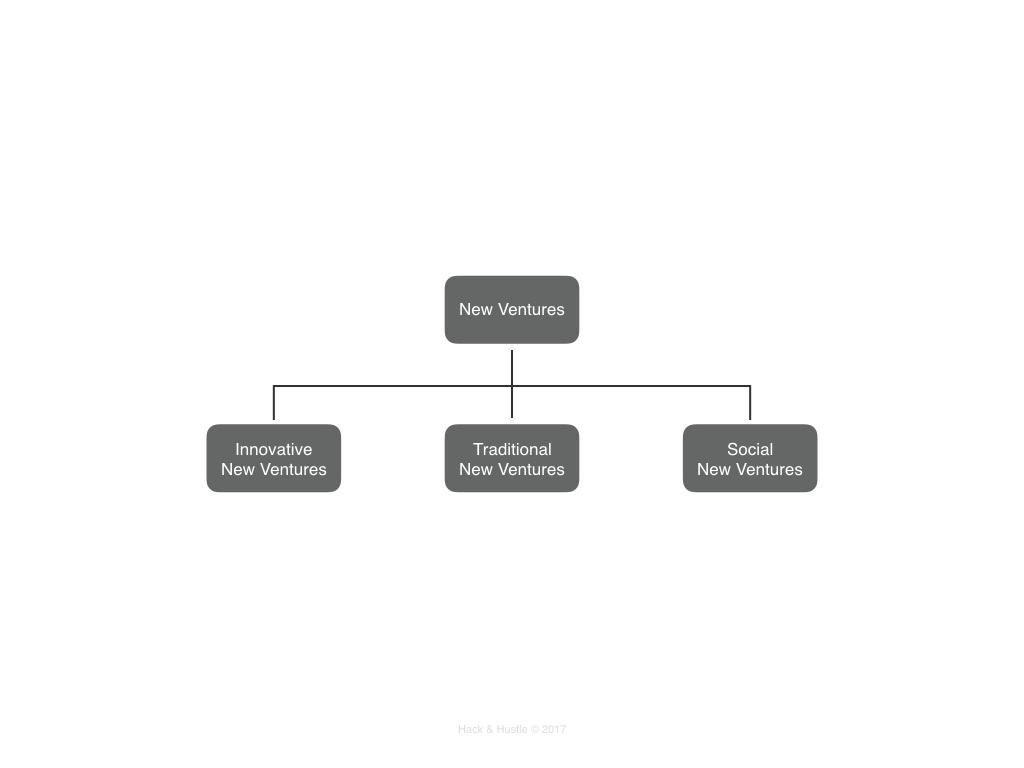Are all startups born the same?
Of course not! Even though the term “startup” is thrown around quite a lot, I believe it is largely misunderstood. Not understanding what it means can have negative consequences on the entrepreneurial ecosystem.
An entrepreneur must be able to clearly identify the nature of his/her own venture, before going into execution mode. Otherwise chances of survival are slim. Not all startups are the same, and not all entrepreneurs are building startups. Moreover, a startup is different from an SME. For simplicity, let’s use the term new venture interchangeably.
Create something new and exciting
Often new ventures are segmented according to their industry, target customer or technical domain. Even though this provides some insights, more information is needed to better assess these ventures.
All people behind a new venture are trying to create something new and exciting (at least from their point of view). However, new ventures can differ greatly. There are three distinct types of new ventures: Innovative, Traditional or Social New Ventures.

Innovative New Ventures
Innovation is implementing a new solution to a problem and creating value. Innovative new ventures bring new solutions (services or products) to market by creating or seizing opportunities.
After recognizing or creating this opportunity, innovative new ventures offer new solutions that have significant value to their customers and a usefulness that they would not otherwise have. These ventures aren’t necessary started with an exit in mind.
Nevertheless, Innovative New Ventures can come in several different shapes.

Foundation New Ventures
A Foundation New Venture is formed from R&D and may launch a new business area. These companies can grow a lot in the first 10 years of existence but may also go bankrupt relatively quick. It is very uncommon to see Foundation Companies go public. Furthermore, they tend to attract very little investor interest.
Foundation New Ventures are focused on creating new opportunities. Therefore, typically, they are trying to create a new solution, to solve a known or unknown need for new or existing customers.
Example: Prevail Therapeutics
High Growth Startups
These ventures are focused on maximising profit and growth through innovation. This type of venture receives most investor interest.
Also called Gazelles, these firms are extremely important for the economic development of a specific geographic area. Interestingly enough, High Growth Startups may start, originally, as a Foundation Company.
High Growth Startups are focused on seizing opportunities. Therefore, typically, they are seizing an existing solution, to solve a known or unknown need for new or existing customers.
Example: AngelList
Scalable Startups
Despite having very humble beginnings, Scalable Startups aim high. Founders typically believe that their vision can change the world. Their focus is on searching for a scalable and repeatable business model.
Although extremely famous, Scalable Startups make up a very small percentage of the different types of new ventures. However, because of their scalability, they attract a lot of (risk) capital and press. They focus on a simple but powerful concept and are recurrently looking for financial investors to raise capital and fund their search for a scalable business model.
Also called Silicon Valley-type Startups, these ventures tend to group in innovation clusters. Personally I am extremely interested in Scalable Startups since many build these startups inefficiently. Scalable Startups are not smaller versions of large companies.
Scalable Startups are temporary organisations designed to search for a scalable and repeatable business model.
Once they find a scalable and repeatable business model, their focus shifts to rapid expansion (see High Growth Ventures above), which requires even more capital.
Scalable Startups are focused on creating news opportunities. Therefore, typically, they are trying to create new solutions, to solve a known or unknown need for new or existing customers.
Example: Facebook.
Buyable Startups
Buyable Startups are designed to be quickly sold for large sums of money
It is not uncommon for these ventures to avoid traditional venture capitalists and to search for other funding routes (crowdfunding being an example).
Unlike Scalable Startups, Buyable Ventures don’t necessarily search for a scalable and repeatable business model.
Buyable Ventures are focused on seizing opportunities. Therefore, typically, they are seizing an existing solution, to solve a known or unknown need for new or existing customers.
Example: WhatsApp.
Large Company Startups
Large Company Startups are born from the need of large companies to be more disruptive in order to deal with changes in customer tastes, new technologies, legislation, new competitors, etc.
Traditionally, large companies grow through sustaining innovation where offering updated variants of existing solutions ensures growth. However, more and more, in order to ensure sustainable business growth, disruptive innovation is becoming a driver of success. Existing businesses can do this by acquiring companies (see Buyable Ventures above) or attempt to build disruptive innovation differently (either by developing other Innovative New Ventures internally or by using other Corporate Innovation Tools). Large companies have an extremely hard time in making disruptive innovation due to their size and culture.
Large Company Startups are focused on creating or seizing new opportunities.
Examples: BCG Digital Ventures portfolio
Other New Ventures
For more information on other new ventures, such as Traditional New Ventures and Social New Ventures, check this extended article on types of startups.



